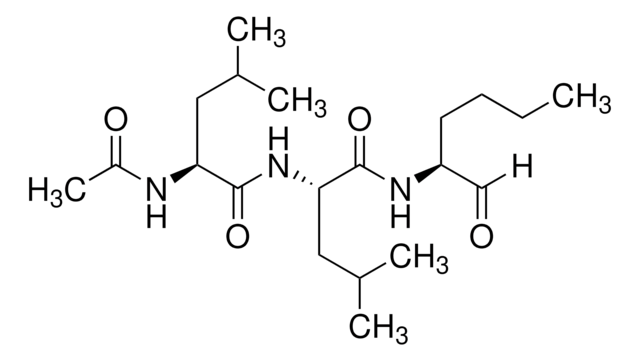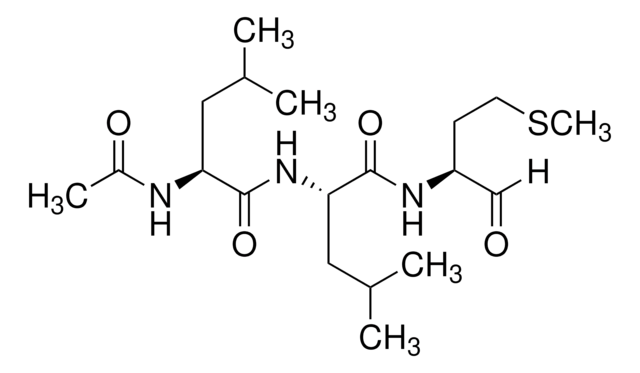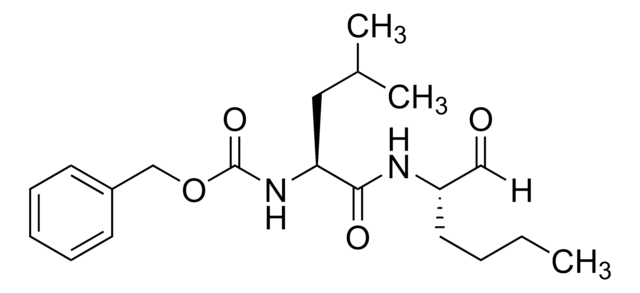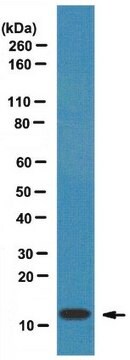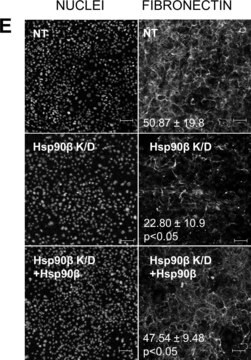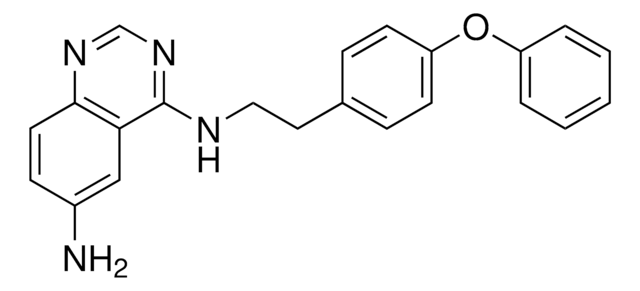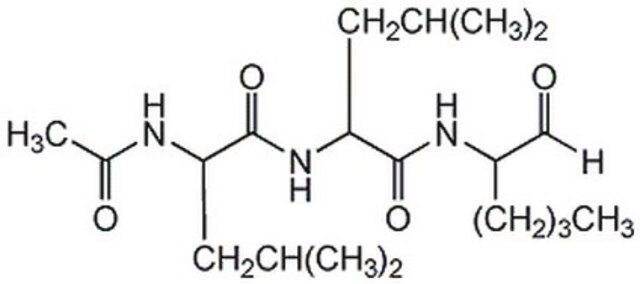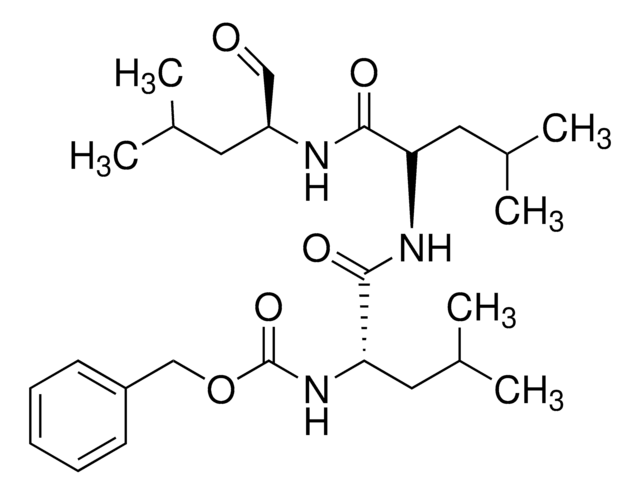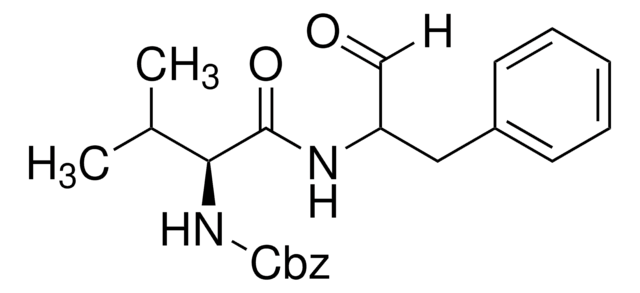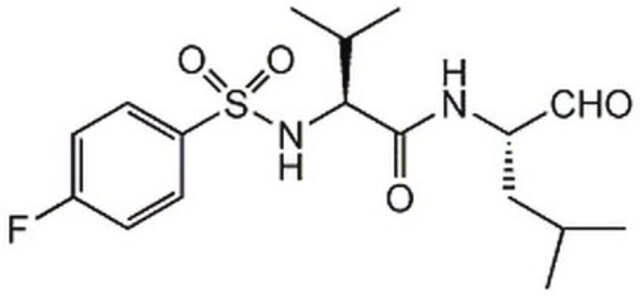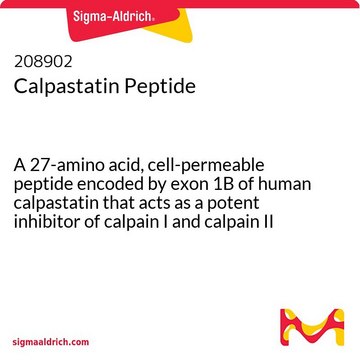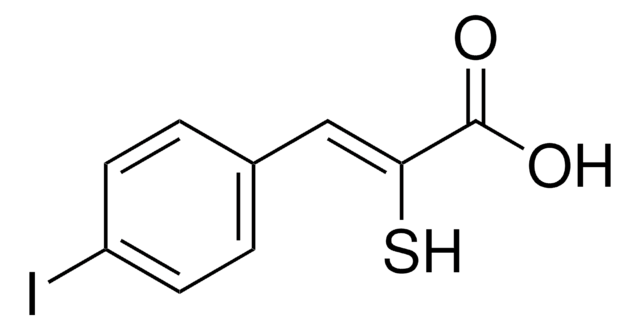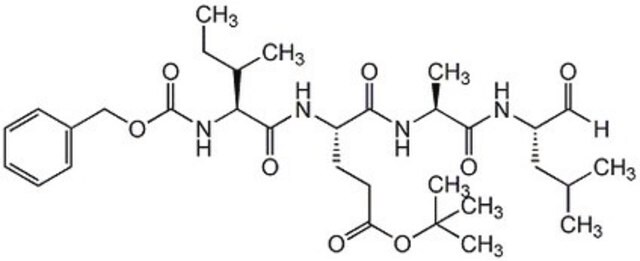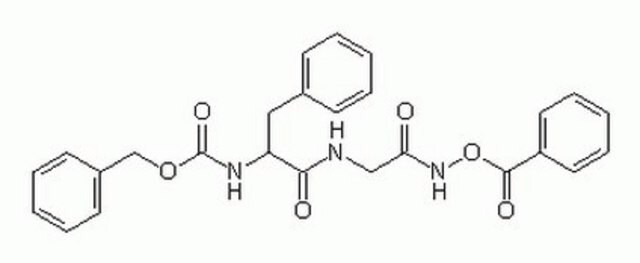Wichtige Dokumente
11086090001
Roche
Calpain-Inhibitor I
N-Acetyl-Leu-Leu-norleucinal, synthetic
Synonym(e):
Kalpain-Inhibitor I, ALLN, Ac-LLnL-CHO, MG-101, N-Acetyl-L-leucyl-L-leucyl-L-norleucinal, N-Acetyl-Leu-Leu-Norleu-al
About This Item
Empfohlene Produkte
Qualitätsniveau
Assay
98% (chromatographically homogeneous)
Form
powder
Mol-Gew.
Mr = 383.5
Verpackung
pkg of 25 mg
Hersteller/Markenname
Roche
mp (Schmelzpunkt)
182 °C
Löslichkeit
DMF: 10 mg/mL
ethanol: 10 mg/mL
methanol: 10 mg/mL
Lagertemp.
2-8°C
SMILES String
[H]C(=O)[C@H](CCCC)NC(=O)[C@H](CC(C)C)NC(=O)[C@H](CC(C)C)NC(C)=O
InChI
1S/C20H37N3O4/c1-7-8-9-16(12-24)22-19(26)18(11-14(4)5)23-20(27)17(10-13(2)3)21-15(6)25/h12-14,16-18H,7-11H2,1-6H3,(H,21,25)(H,22,26)(H,23,27)/t16-,17-,18-/m0/s1
InChIKey
FMYKJLXRRQTBOR-BZSNNMDCSA-N
Suchen Sie nach ähnlichen Produkten? Aufrufen Leitfaden zum Produktvergleich
Verwandte Kategorien
Allgemeine Beschreibung
Spezifität
Anwendung
Calpain Inhibitor I is used for western blotting methods.
Qualität
Alternative Formulierung
Angaben zur Herstellung
The suggested starting concentration is 17 μg/ml. This is the concentration at which half maximal inhibition of calpain I is observed.
Working solution: Recommended solvent is DMF, ethanol, or methanol up to 10 mg/ml.
Storage conditions (working solution): -15 to -25 °C
Solutions in DMF, methanol, ethanol are stable for 4 weeks at -15 to -25 °C.
Rekonstituierung
Sonstige Hinweise
Lagerklassenschlüssel
11 - Combustible Solids
WGK
WGK 2
Flammpunkt (°F)
Not applicable
Flammpunkt (°C)
Not applicable
Analysenzertifikate (COA)
Suchen Sie nach Analysenzertifikate (COA), indem Sie die Lot-/Chargennummer des Produkts eingeben. Lot- und Chargennummern sind auf dem Produktetikett hinter den Wörtern ‘Lot’ oder ‘Batch’ (Lot oder Charge) zu finden.
Besitzen Sie dieses Produkt bereits?
In der Dokumentenbibliothek finden Sie die Dokumentation zu den Produkten, die Sie kürzlich erworben haben.
Kunden haben sich ebenfalls angesehen
Unser Team von Wissenschaftlern verfügt über Erfahrung in allen Forschungsbereichen einschließlich Life Science, Materialwissenschaften, chemischer Synthese, Chromatographie, Analytik und vielen mehr..
Setzen Sie sich mit dem technischen Dienst in Verbindung.